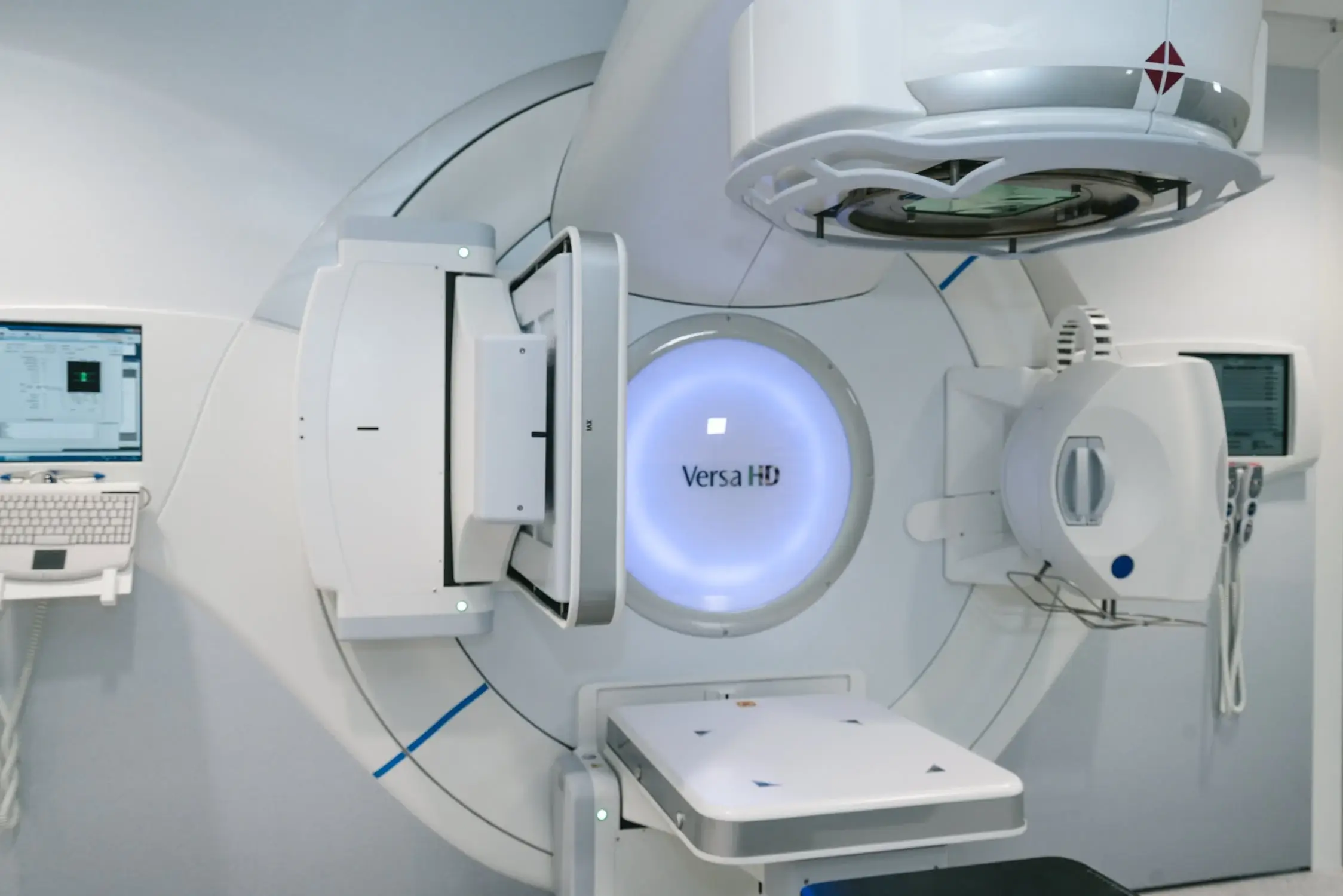The most common available treatment for cancer is surgery. This process involves removing the tumour from the body in the hopes that it can cure or stop the cancer from spreading. While surgery alone does work for some cancers, notably these are diagnosed in the very early stages of detection - so, it will depend on the staging of your cancer.
Typically, surgery is combined with other forms of cancer treatment, such as radiotherapy. There are many ways to treat cancer alongside radiotherapy. A patient's options will depend on the type of cancer diagnosed as well as where it is situated in the body.
How Does Radiotherapy Work?
Radiation therapy is one of the ways to treat cancer. Radiation therapy uses high-energy particles or waves, such as x-rays, gamma rays, electron beams, or protons, to destroy or damage cancer cells. It does this by damaging the DNA of the cancer cells. The DNA is the “brain” of the cell, responsible for directing all the cells’ activities. The aim is to cure the cancer, slow down its growth or prevent it growing further.
How Is It Given?
Radiotherapy can be administered in a number of different ways, either internally or externally to the body. For example, it is most commonly done:
- Externally: In this case, a beam of radiation is aimed via a machine, directly onto the cancerous tumour.
- Internally: Brachytherapy is when the radiation is administered via implants which are usually placed temporarily inside your body in the area in which the cancer is situated.
Radiotherapy can also be given via injections, capsules or in liquid form. In addition, Intrabeam radiotherapy is administered during surgery of the breast for example, where the beam targets the tumour directly.
Radiotherapy treatment is usually given in a hospital. However, if you undergo radiotherapy via implants or Radioisotope Therapy (RIT), where a liquid is injected into your body, then you can typically go home straight afterwards.
One usually needs a number of sessions of radiation therapy which are given over a few weeks.
What Types of Radiotherapy Are There?
Radiotherapy can be curative and get rid of cancer completely. This is obviously the best possible outcome. However, it can also make other therapies, such as chemotherapy or surgery, more effective - this is called “Neo-Adjuvant radiotherapy”. “Adjuvant radiotherapy” is when it is used to prevent the cancer returning post-surgery. Meanwhile, when it is used to help reduce symptoms, if a cure is not possible, it is called “palliative radiotherapy”.
What Are the Side Effects of Radiotherapy?
Radiation therapy is usually painless and the sessions are fairly short in time. But unfortunately, it can have side effects as radiation also affects normal cells alongside those that are cancerous. It usually causes side effects around the treatment area. Most side effects improve a few weeks after treatment. Common side effects include:
- Fatigue (speak to your employer about taking time off to recover during and after the sessions)
- Hair loss - Usually in the area of the radiation and most often grows back (but may change in texture or colour)
- Sore skin - Usually around the area of radiation where the skin can change colour (usually red like sunburn) or sometimes permanently darker post-treatment
- Loss of appetite
- Nausea
- A sore mouth
- Diarrhoea
- Lymphoedema (this is when lymph channels which drain your arms and legs become blocked and cause swelling)
All of these side effects can be treated, so, speak with your health care team to find out how best to manage them.
Longer term side effects are also possible with radiotherapy. For example, you may suffer from fertility issues when the radiation is directed specifically at one’s reproductive organs such as the testicles or ovaries. In this case, many people opt to freeze their sperm or eggs so that they are able to still choose to have a child after therapy.
Another longer-term side effect is known as radiation fibrosis. This is when your tissues become less supple. It will only affect the area that has been radiated. It cannot harm other parts of your body in this way. So, for example, radiation around the vagina can make the vagina less stretchy. In addition, you may find it harder to swallow if the treatment occurred around the throat and chest area. Similarly, radiation to the breasts can change the shape or feel of your breasts.
Am I Radioactive After Treatment?
You will not be radioactive after external radiation as the beams pass right through your body. However, if you are having radiation via implants or injections, you may need to avoid close contact with people for a few days and many people stay in hospital over this period as a precaution.


 71–75 Shelton Street, Covent Garden, London, WC2H 9JQ
71–75 Shelton Street, Covent Garden, London, WC2H 9JQ +44 (0) 20 3376 1032
+44 (0) 20 3376 1032



